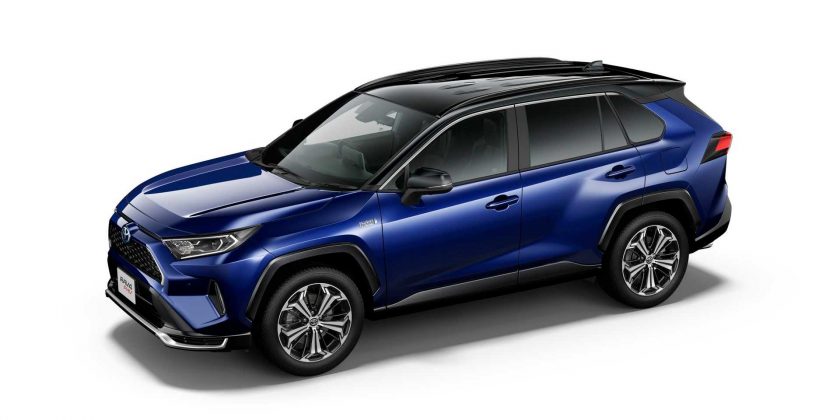Toyota introduced the RAV4 Prime in Japan on June 8, but suspended orders three weeks later.
It seems that Toyota is experiencing a classical “demand problem” in the plug-in industry as the demand “greatly exceeds the production capacity.”
According to news from Japan, Toyota has officially suspended orders for its latest plug-in hybrid RAV4 Prime, just three weeks after the car was launched in the country (on June 8, 2020).
One might wonder, how this could be? What is the problem, and why did it happen in times of general slowdown of car sales, when a surplus of manufacturing capacity over sales could be redirected towards plug-ins?
It’s quite unfortunate that Toyota seems to not be putting too much love in plug-ins, especially since the cars are fine.
The first worrying sign was that Toyota assigned for its home market the sales target of just 300 units per month (less than 4,000 per year). We are not surprised that such a low volume was ordered within 2-3 weeks.
It’s not clear to us why such a big manufacturer is unable to secure manufacturing capacity for more units, and now we are worried about the limited availability also in other markets.
The Japanese media reports two limiting factors in Japan – battery constraints and the uncertainty about the subsidies next year.
Well, with an 18.1 kWh battery pack and 300 units per month, we are talking about 5.43 MWh, which is so low in the automotive industry that we struggle to imagine how it may be a limiting factor. For comparison, Nissan sold almost 3,600 LEAFs in Japan within the first three months, almost 10 years ago (December 2010 – 19, January 2011 – 962 and February 2019 – 2,593) and over 9,000 total in the first 12-months (despite the 2011 Tōhoku earthquake and tsunami).
Gallery: Toyota RAV4 Prime in Japan
48 Photos This popular SUV now has a terrific plug-in option and the InsideEVs Forum is where you can learn more about it. Source: Read Full Article








Take Part In The Toyota RAV4 Prime Discussion Here
